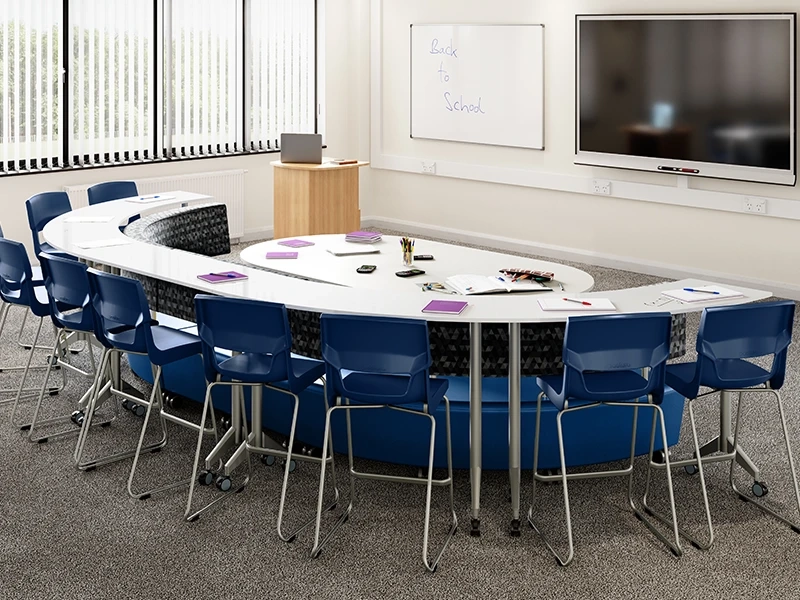When it comes to selecting furniture for educational environments, the decision between combo school chairs with desks and standalone school desks and chairs is significant. Both options have their own sets of advantages and drawbacks, tailored to different teaching styles, classroom sizes, and student needs. This article aims to explore the differences between these two types of classroom furniture to help educators, school administrators, and even parents make informed choices.
Combo School Chairs with Desks: A Compact Solution
Combo school chairs with desks, often referred to as chair-desk combos, are integrated units where a desk is attached to a chair. This design offers a compact, space-saving solution for classrooms. One of the primary benefits of combo units is their ability to streamline the classroom layout. Since each unit is a self-contained workstation, it eliminates the need to match separate chairs and desks, ensuring uniformity and saving valuable classroom space.
Moreover, combo units are easy to maintain and clean. With fewer pieces of furniture in the classroom, custodial staff can more efficiently navigate and clean the space. Additionally, these units are typically designed with mobility in mind, featuring lightweight materials and sometimes casters for easy rearrangement.
However, combo units have their limitations. They offer less flexibility in terms of seating arrangements and can be restrictive for larger students or those who require more space to work comfortably. Also, since the desk and chair are attached, it's challenging to replace one component in case of damage or wear.
Standalone School Desks and Chairs: Flexibility and Comfort
Standalone school desks and chairs, on the other hand, offer greater flexibility and customisation to accommodate diverse classroom activities and student needs. This option allows educators to rearrange the layout according to the lesson plan, promoting collaborative work, group discussions, or individual study with ease.
One of the significant advantages of standalone desks and chairs is the ability to adjust seating arrangements for students of various sizes and needs. Chairs and desks can be selected in different sizes or adjusted in height, ensuring that every student finds a comfortable fit. This adaptability is crucial for creating an inclusive learning environment where all students can focus on their studies without physical discomfort.
Furthermore, standalone furniture can be easily replaced or updated. If a desk or chair is damaged, it can be swapped out without the need to replace an entire combo unit. This aspect is particularly beneficial for schools looking to maintain their furniture in top condition without incurring excessive costs.
However, the flexibility of standalone desks and chairs comes with a need for more space. Classrooms must be larger to accommodate individual pieces of furniture, and the setup can appear less organized than the streamlined appearance of combo units. Additionally, the increased number of furniture pieces can make cleaning and maintenance more time-consuming.
Making the Right Choice
Combo units are ideal for smaller classrooms and settings where space efficiency is paramount. They offer a neat, organized look and are easy to manage. However, they might not be the best choice for older students or those who require more adaptable and comfortable seating options.
Standalone desks and chairs, while requiring more space, provide the flexibility needed for a dynamic and inclusive learning environment. They cater to students of all sizes and can be rearranged to suit different teaching styles and classroom activities.
Summing up, both combo school chairs with desks and standalone school desks and chairs have their place in educational settings. The key is to assess the specific needs of your students and the logistical considerations of your classroom furniture to make the best choice. By prioritising comfort, flexibility, and space efficiency, educators can create an optimal learning environment that supports student success.


